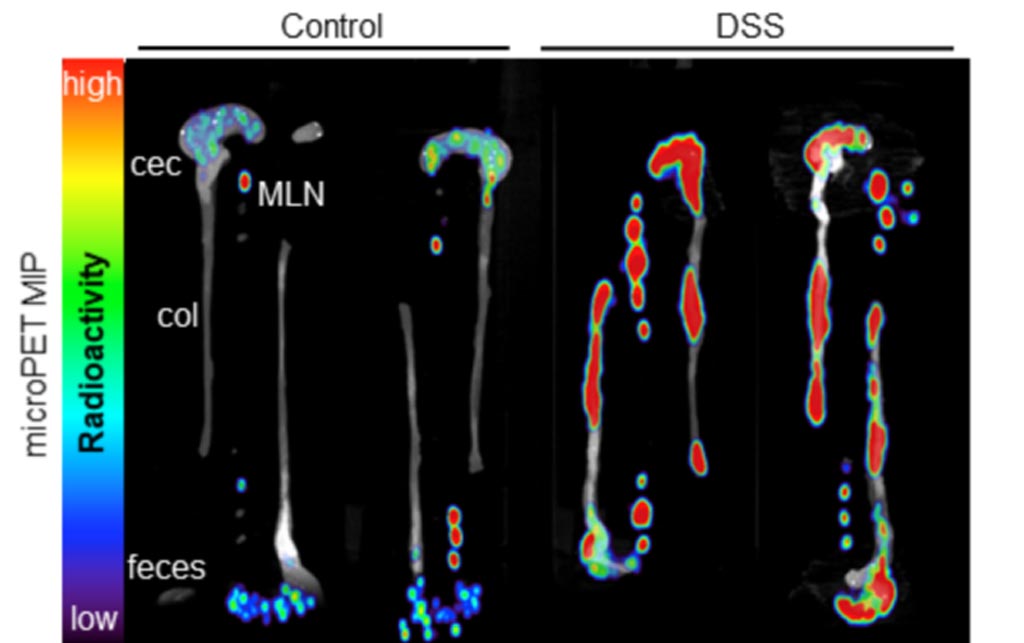PET Imaging Technique Pinpoints Colitis Inflammation
By MedImaging International staff writers
Posted on 13 Jun 2018
A new positron emission tomography (PET) method can detect inflammation sites in people with inflammatory bowel disease (IBD), according to a new study.Posted on 13 Jun 2018
Researchers at the University of California, Los Angeles (UCLA; USA) and Regeneron Pharmaceuticals (Tarrytown, NY, USA) conducted a mouse model study of colitis that used PET imaging with antibody fragment probes (immunoPET) based on GK1.5 cys-diabody (cDb) that target CD4+ T cells, a subset of immune cells characteristic of IBD. A zirconium-89 (89Zr)-labeled anti-CD4 engineered cDb probe was used for noninvasive imaging of the distribution of CD4+ T cells in mice with induced colitis.

Image: Ex vivo images of colons, ceca, and mesenteric lymph nodes taken via the immunoPET platform (Photo courtesy of UCLA).
The results revealed an increased number of CD4+ T cells in the colons of colitic mice, as confirmed by immunohistochemistry. Increased uptake of 89Zr-malDFO-GK1.5 cDb was detected in the distal colon, ceca, and mesenteric lymph nodes (MLNs) in in-vivo PET scans. Ex-vivo scans and biodistribution also confirmed the higher uptake in dextran sulfate sodium (DSS)-treated colons, ceca, and MLN. The researchers suggest that CD4 immunoPET has the potential to guide development of antibody-based imaging in humans with IBD. The study was published in the June 2018 issue of The Journal of Nuclear Medicine.
“ImmunoPET is a robust and general platform for visualization of highly specific molecular targets. CD4 immunoPET could provide a noninvasive means to detect and localize sites of inflammation in the bowel and also provide image guidance for biopsies,” said senior author Professor Anna Wu, PhD, director of the UCLA cancer molecular imaging program. “It could unlock our ability to assess inflammation in a broad spectrum of disease areas, including oncology and immune-oncology, auto-immunity, cardiovascular disease, neuroinflammation, and more.”
CD4+ T helper cells are white blood cells that are an essential part of the human immune system. They are called helper cells because one of their main roles is to send signals to other types of immune cells, including CD8 killer cells, which then destroy the infectious particle. If CD4 cells become depleted, for example in untreated HIV infection, or following immune suppression prior to a transplant, the body is left vulnerable to a wide range of infections that it would otherwise have been able to fight.
Related Links:
University of California, Los Angeles
Regeneron Pharmaceuticals














